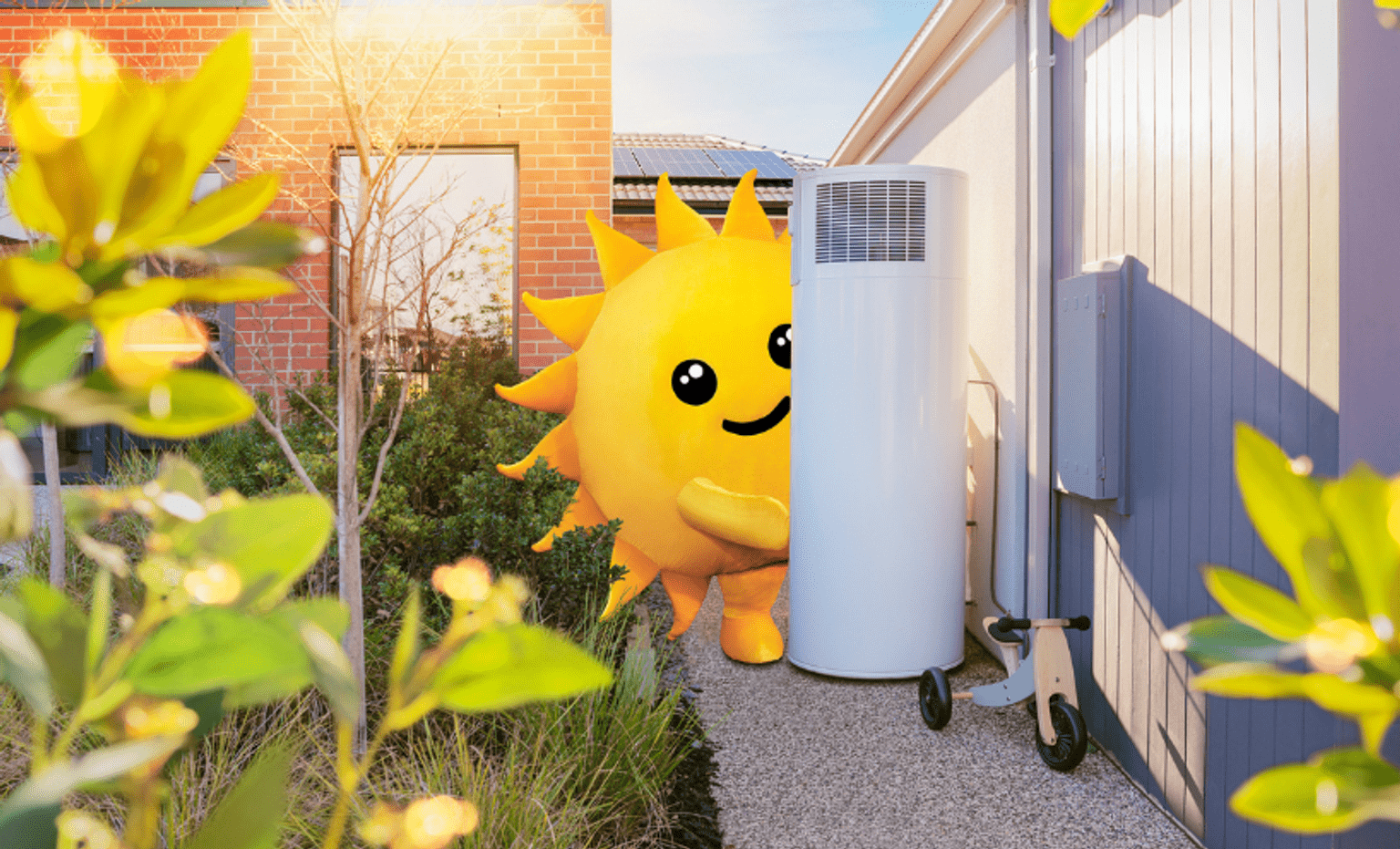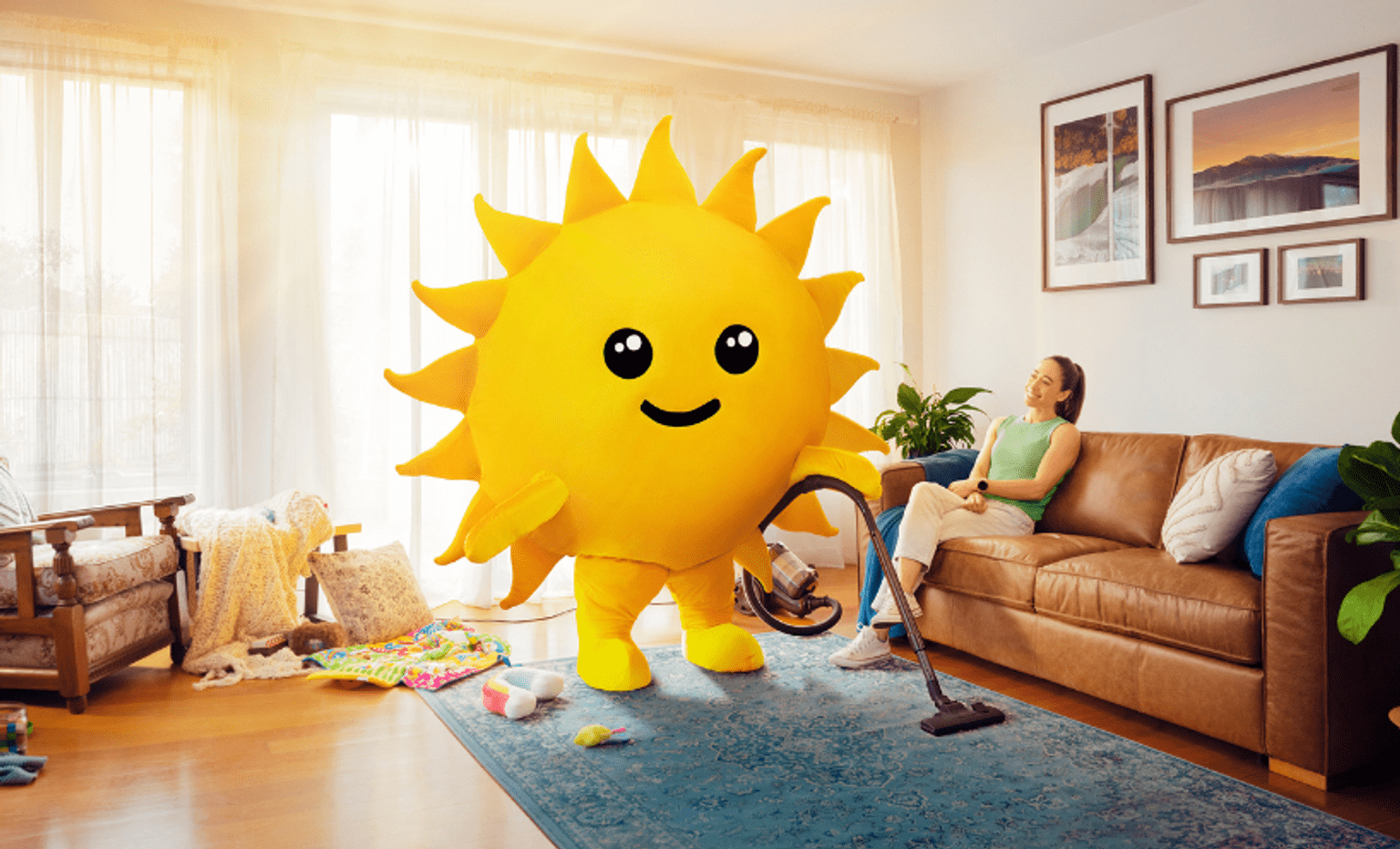See Section 4 for details on system sizing and tanks for all hot water systems, and read on for advice on heat pump hot water systems.
Integrated and split systems explained
Like solar systems, heat pump hot water systems are configured as either one-piece (integrated) or split. In an integrated system, the evaporator and fan are mounted on top of or beside the tank and integrated into a single unit.
In a split system, the heat pump mechanism is housed in a separate unit plumbed to the tank at installation time.
An integrated unit has the benefits of simpler installation and compactness, whereas a split-system unit allows greater flexibility in locating the two components. For example, you could locate the tank indoors and the heat pump mechanism outside on a wall. Integrated heat pumps weigh more so could take two people to move or install.
Boosting
Heat pumps are designed to run whenever the tank temperature falls below a pre-set level (e.g. 60°C). Some heat pumps struggle in air temperatures approaching freezing, and so may use a resistive electric element as a booster in these conditions. This can end up using quite a bit of extra energy, leading to higher running costs. If you live in an area that sees regular near-freezing temperatures, look for a system that will operate under such conditions without the need for a resistive booster. Plenty of these systems are on the market, you’ll just need to do some research or chat to your installer.
Some heat pumps also come with a timer, so that it operates during the middle of the day, using solar panel (PV) generated electricity (if you have it) and benefitting from higher daytime ambient temperatures.
Not all heat pumps have timers, however if you want to make the most of your solar panels (PV) you should consider a heat pump that includes an in-built timer or ideally can communicate with your solar panel (PV) system to optimise your solar generation.
However, extra hot water may be needed at other times, so most timers have the ability to be overridden for just such requirements.
Noise
Being refrigerative systems with compressors and fans, heat pumps make some noise, although some are noisier than others. Reported noise levels are comparable to modern refrigerators. Avoid fitting the condenser close to bedrooms unless they’re on a timer and only run during the day.
Noise is perhaps slightly more of a consideration for a heat pump hot water system than for an air conditioner because use is year-round and heating operation can engage at any time of the night or day.
With systems that have a controller that can be programmed to heat at certain times of the day, the ability to restrict time of operation may be useful if noise is a concern.
Select an appropriate location to install a system. For example, outside a kitchen or bathroom might be more appropriate than outside a bedroom.
Installation considerations for heat pump hot water systems
The installation of a heat pump hot water system requires less work than a solar hot water installation, and the location of the equipment is much less sensitive to local factors such as shading and roof access.
An electrician is required to install the electric circuit for the hot water service. If the heat pump is replacing an existing conventional electric system then the plumbing and electrics should be no more difficult than for replacing a new conventional system.
All water pipes should be insulated to reduce heat loss and to minimise or eliminate frost damage.
Updated



